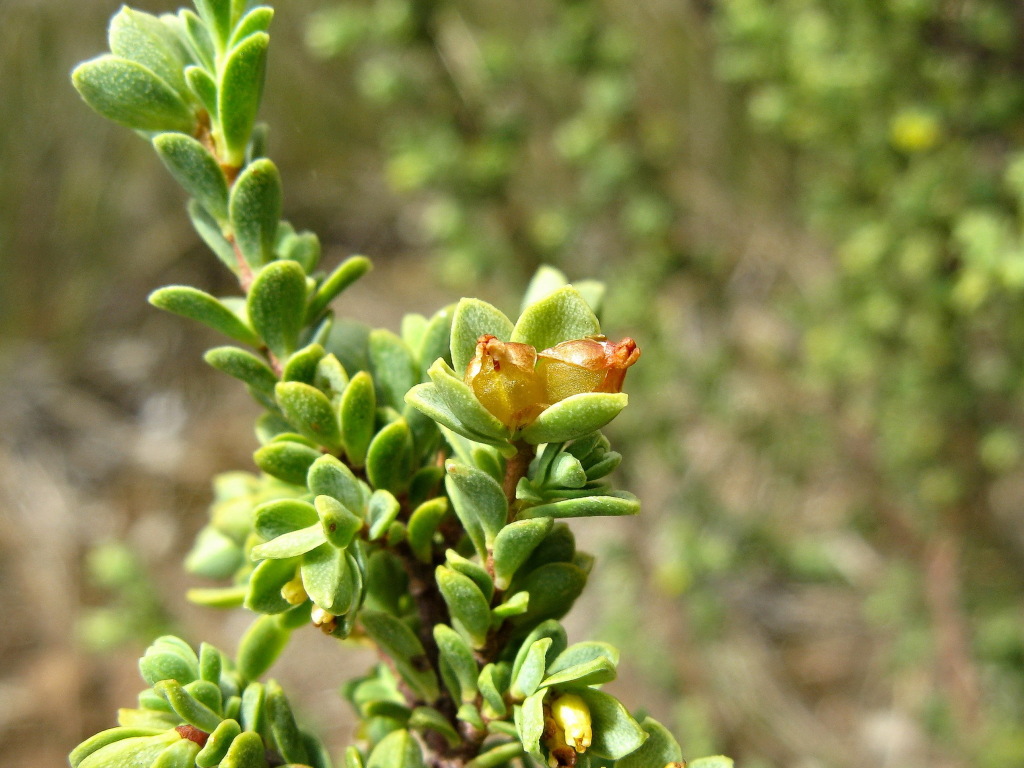Pimelea serpyllifolia subsp. serpyllifolia
Thyme Rice-flowerShrub 0.1–1.5 m high, rarely prostrate; stems glabrous. Leaves opposite, crowded, shortly petiolate, narrowly elliptic to obovate, 2–7 mm long, 1–2.5 mm wide, concolorous, glabrous; margins sometimes recurved. Inflorescence terminal, but sometimes on a very short lateral branchlet, a compact head of 4–12 flowers; involucral bracts leaf-like, 2 or 4 sessile, elliptic-obovate, 2–7 mm long, 1–4 mm wide, glabrous, green. Flowers unisexual, usually yellow, sometimes yellowish-green or white, glabrous outside and inside (rarely sparsely hairy inside); floral tube 1.5–2.5 mm long, style-portion of female flowers shorter than ovary-portion; sepals 0.8–1.7 mm long; pedicel hairy; stamens shorter than sepals; anthers opening laterally or somewhat laterally. Fruit dry, enclosed or naked. Flowers mainly winter–spring.
LoM, MuM, GleP, Brid, VVP, GipP, OtP, WaP, WPro, OtR, Strz. Grows in shrubland and woodland, usually in calcareous soils; mostly near the coast but also in far north-west of State.
Characterized by the crowded leaves and the glabrous flowers borne in a terminal inflorescence. Subsp. occidentalis, a Western Australian endemic, differs from subsp. serpyllifolia in having stems hairy for a few internodes below each inflorescence and flowers which are at least sparsely hairy inside.
Stunted, spinescent plants primarily from the basalt plains and further north (once included in P. serpyllifolia) have been recognised as a distinct species, P. spinescens.
Entwisle, T.J. (1996). Thymelaeaceae. In: Walsh, N.G.; Entwisle, T.J., Flora of Victoria Vol. 3, Dicotyledons Winteraceae to Myrtaceae, pp. 912–930. Inkata Press, Melbourne.
 Spinning
Spinning


